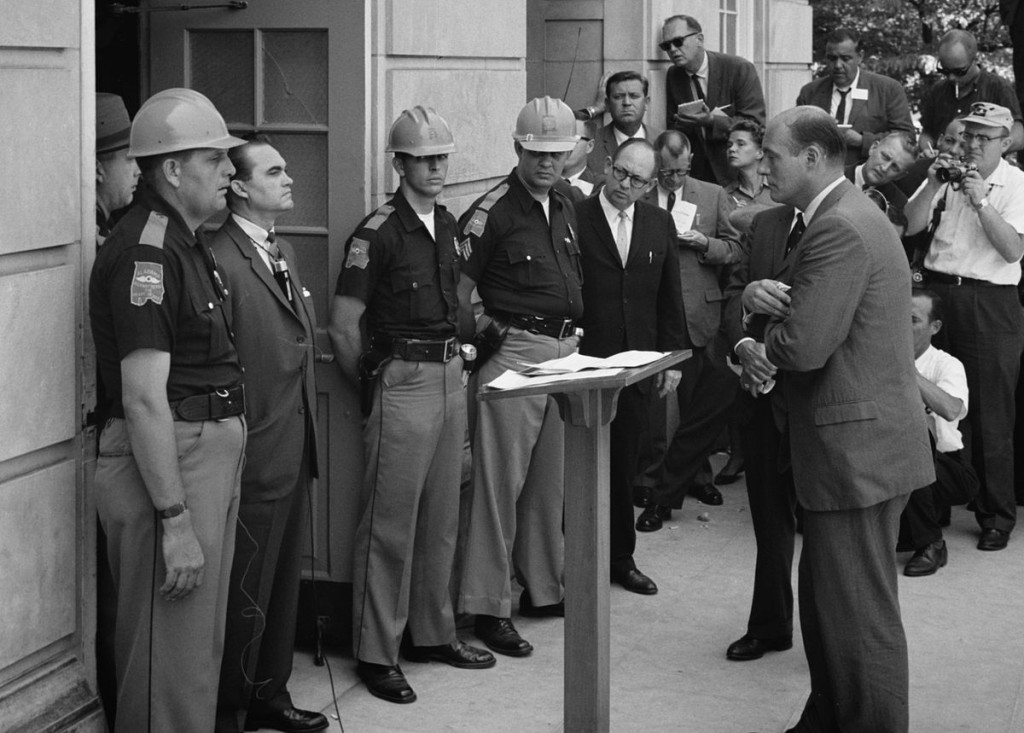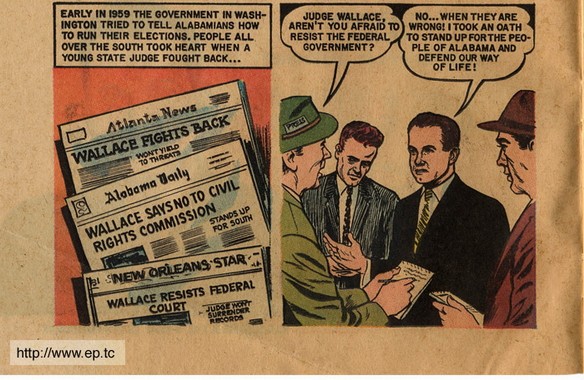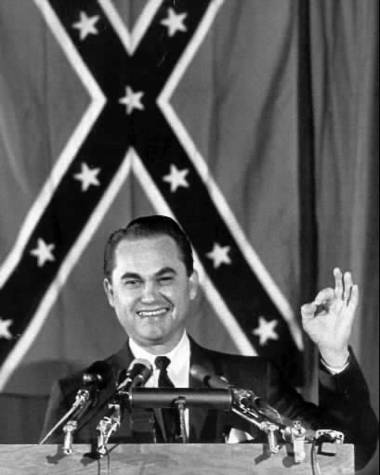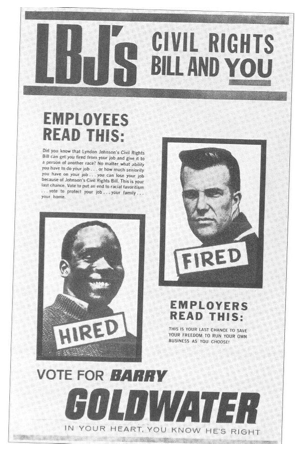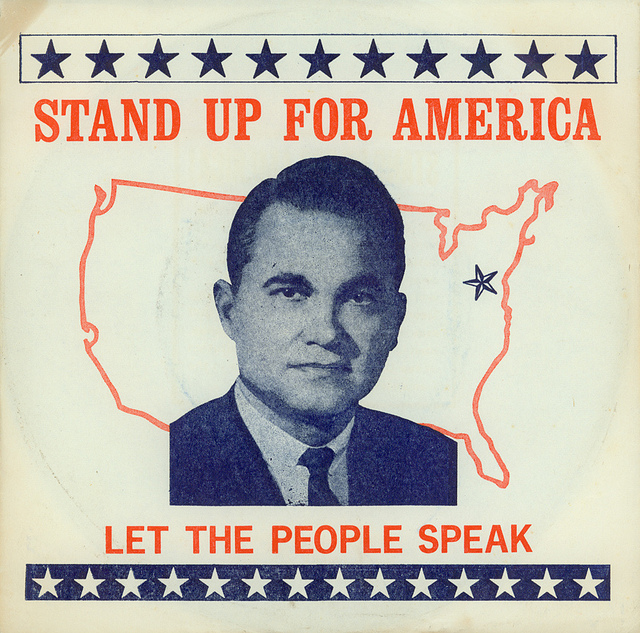FOX News gave Cliven Bundy, a Nevada rancher, massive amounts of airtime. U. S. Senator Rand Paul and FOX pundit Sean Hannity praised Bundy’s stance against the federal government. (Never mind the federal government owns the land Mr. Bundy grazes his cattle on, which is what the dispute is about, and has owned the land for generations.) The entire conservative blogosphere heated up over the new anti-government hero, until….
Cliven Bundy had a chat with the New York Times about “the Negro”:
“I want to tell you one more thing I know about the Negro,” he said. Mr. Bundy recalled driving past a public-housing project in North Las Vegas, “and in front of that government house the door was usually open and the older people and the kids — and there is always at least a half a dozen people sitting on the porch — they didn’t have nothing to do. They didn’t have nothing for their kids to do. They didn’t have nothing for their young girls to do.
“And because they were basically on government subsidy, so now what do they do?” he asked. “They abort their young children, they put their young men in jail, because they never learned how to pick cotton. And I’ve often wondered, are they better off as slaves, picking cotton and having a family life and doing things, or are they better off under government subsidy? They didn’t get no more freedom. They got less freedom.”
So, once again, we have a hero of the Right invoking the old racial bogey man, the porch monkey paradigm, the shiftless black, the unintelligent picker-of-cotton-is-your-proper-role black. And the Right is running for the hills now, abandoning their one-time hero, because he didn’t learn the lesson that George Wallace learned — stop using racial terms and use “dog-whistle” words such as “states’ rights” instead.
Remember that old Patrick Henry quote the Right loves? “Extremism in defense of liberty is no vice?” Well, here’s something not quite extreme enough… but my little personal whack at a bit of liberty from the libertarians / tea party activists / “white jezuz” people / historical revisionists on race. My focus is mainly on one man, George Wallace, and for a personal set of reasons.
I became a political animal in 1968 — a very bad year to start caring about such things — after watching television broadcasts of the riotous (both inside and outside the convention center) Chicago Democratic Convention. Following my parents’ lead at the time, I was by default a Nixon fan (I vividly remember the cool, colorful Wilt Chamberlain / Richard Nixon poster I hung next to my bed). Nixon’s the One! (Or, as a left-wing sticker I’d collected put it, “Nixon is One!”) Martin Luther King was shot. Bobby Kennedy next. And what was left? An f-bomb screaming Mayor Daley (first time I’d ever seen that on TV!), yippies and newsmen getting their heads stove in by rioting police, followed by a national election that put a criminal in the White House.
But part of that election cycle also included a villain from the black and white era moving without apology onto the colorful late-1960s stage. George Wallace, Governor of Alabama, I knew mostly for only one thing. This photo, in which Wallace on June 11, 1963 attempted to block the door of the University of Alabama to deny black students from enrolling:
This was the same George Wallace who said that the federal government would never integrate the South, putting it in a colorful, catchy phrase from his inaugural speech: “Segregation now, segregation tomorrow, segregation forever!”
George Wallace appalled me; he (and Mayor Richard Daley) were my favorite political villains. When, in 1972, George Wallace was shot but survived (more on that later), I raged to my high school friends: “Abraham Lincoln, JFK, Martin Luther King, and Bobby Kennedy… all of them die when some idiot shoots them. And George Wallace survives?! There is no God.” (Obviously I was not a Christian at the time and the comment was mean.)
Recently, I stumbled across some old George Wallace election materials. And that, coupled with my continued Quixotic quest to wake Christians up regarding the poisonous influence exercised upon the churches by the so-called Religious Right, led to this experiment.
Here are just a few photos from the late Governor George Wallace’s political career, showing how his initially overt racism became more and more encoded — before it was (they admit it themselves) picked up by the Republican Party to form a “Southern Coalition” which in most of the ’70s and ’80s owned the White House.
Initially, racial messages were easy to send. In 1960, Wallace, “the little Judge,” was running for Alabama Governor. The pro-segregation message of this cheerful campaign comic is blatant; no black face appears anywhere in the comic because “Alabamans” didn’t include black voters. (Denying African-Americans the vote was part of what segregation was about, of course.) The word “Segregation” is proudly used multiple times. “Our way of life” meant, of course, our white way of life with whites in control and blacks playing their subservient roles — as did the term “Southern Tradition.” Wallace touts himself as having been raised in a “Christian” family and promised to govern “with God’s help.” All the pieces to what we experience today as the political and religious Right are present in this comic (just one page offered here).
In 1964, George Wallace surprised some (but not others) when he openly supported the ultra-conservative Republican candidate, Barry Goldwater. The below photo from a 1964 Republican stump speech reveals one of the most iconic symbols of racism ever, the Confederate Flag.
Materials pumped out by the Goldwater campaign included (below) this overtly racist, but slightly more carefully crafted, piece of propaganda. The emphasis is on voting for Goldwater so that a (white) business owner is can hire who he wants to. (That sounds very modern, doesn’t it?) In a terrible election year for Republicans, Goldwater was trounced by Lyndon Johnson. But a close look at 1964 electoral maps showed one surprise. Out of the six states Goldwater won, five of them came from the deep South.
In 1968, George Wallace decided to run for President himself on a third party ticket (The American Independent Party). Some believe his intention was to take enough votes from both mainstream candidates to force a House-decided election; he came close with 10 million votes and five states’ electoral votes (nearly the same states Goldwater won in 1964, with Wallace’s help). What were the ’68 slogans and “spin”? In a two-fer, he offered both “Stand Up for America” and “Let the People Speak.” From an observer’s point of view, that looks suspiciously like an amalgam of an old-school segregationist meme (America needs to be rescued from “big govvernment!”) and a sly rip-off from the sixties left (“Let the People Speak” echoes Yippie literature, among others).
Gov. Wallace had a very smart friend during this time, Harry Dent. In the 1950s, Mr. Dent had worked for Strom Thurmond, a briefly Democratic segregationist who before his incredibly long tenure in the United States Senate [ South Carolina], was a 1948 third party Presidential candidate (the States’ Rights Democratic Party also called “the Dixiecrats”). Thurmond switched parties in 1964, remaining a Republican until he left congress in 2003.
Dent in ’64 worked with Barry Goldwater and by 1972, Richard Nixon, where he helped perfect what he called “The Southern Strategy.” As the Democratic Party forsook its racist roots and rallied minorities and women, the Republicans via Dent saw their opportunity to capitalize on white fear. But in 1968 George Wallace’s old school segregationist vibe was simply more persuasive to the Southern voter than Richard Nixon’s carefully encoded version. Nixon lost the South to Wallace, but still won the election. (Dent joined the Nixon administration, and stayed on to serve with Gerald Ford, Ronald Reagan, and George H. W. Bush.)
Wallace’s 1972 run for Presdent offered the usual feisty, but this time carefully crafted “dog whistle” slogan. “Send them a message.” His face alone — the same face that had stared with hostility into the faces of National Guardsmen sent to integrate the University of Alabama — said the rest.
Wallace became all but a non-factor politically in 1972 when Arthur Bremer, a mentally unstable individual who had also stalked Richard Nixon (and possibly other political candidates), shot Wallace with four bullets at point blank range. Astonishingly, though one struck Gov. Wallace’s spinal cord and paralyzed him, Wallace survived.
Change is often forced upon us, whether we like it or not. Sometimes, change comes that seems to touch a previously impervious person’s inward world. In his later years, according to NPR, “George Wallace reached out to civil rights activists and appeared in black churches to ask forgiveness. In his last election as governor of Alabama in 1982, he won with more than 90 percent of the black vote.”
How real was Wallace in his Christian faith? Had it become anything more than it had been in his 1960 gubernatoral campaign, both literally and figuratively a comic-book faith? No one, I suspect, can say. But there is this. In August 1995, only months before his death, George Wallace wrote his would-be assassin George Bremer these words:
“Dear Arthur, your shooting me in 1972 caused me a lot of discomfort and pain. I am a born-again Christian. I love you. I have asked our Heavenly Father to touch your heart, and I hope that you will ask him for forgiveness of your sin so you can go to Heaven like I am going to Heaven. I hope that we can get to know each other better. We have heard of each other a long time.” He offered one plea. “Please let Jesus Christ be your savior.”
This strange discovery — or perhaps realization? — of Christianity’s central demand to love others also came to two of the Republicans most responsible for the Southern Strategy. Lee Atwater, diagnosed with brain cancer, wrote apologizes to various people he’d savaged over the years, including Michael Dukakis, the target of his infamous Willie Horton ad. That ad, like so much else, had been all about the Southern Strategy. Horton’s blackness was, of course, never mentioned. It didn’t need to be mentioned:
Atwater also observed how the Southern Strategy, like Wallace’s face on that 1972 poster, was still in play. (Text follows video, the latter having some contemporary examples of Southern Strategy before the Atwater segment.)
You start out in 1954 by saying, “Nigger, nigger, nigger.” By 1968, you can’t say “nigger” — that hurts you. Backfires. So you say stuff like forced busing, states’ rights and all that stuff. You’re getting so abstract now [that] you’re talking about cutting taxes, and all these things you’re talking about are totally economic things and a byproduct of them is [that] blacks get hurt worse than whites. And subconsciously maybe that is part of it. I’m not saying that. But I’m saying that if it is getting that abstract, and that coded, that we are doing away with the racial problem one way or the other. You follow me — because obviously sitting around saying, “We want to cut this,” is much more abstract than even the busing thing, and a hell of a lot more abstract than “Nigger, nigger.”
[…] As to the whole Southern strategy that Harry Dent and others put together in 1968, opposition to the Voting Rights Act would have been a central part of keeping the South. Now [the new Southern Strategy of Ronald Reagan] doesn’t have to do that. All you have to do to keep the South is for Reagan to run in place on the issues he’s campaigned on since 1964 and that’s fiscal conservatism, balancing the budget, cut taxes, you know, the whole cluster.
Various Republican spokespersons have apologized for the Southern Strategy. But the election of a black President and the resultant orchestrated rise of the Tea Party argue strongly that strategy remains with us, if not as effective as it used to be.
George Wallace and Lee Atwater weren’t alone in their repentance. Harry Dent, arguably the real creator of the Southern Strategy which Atwater perfected, also had a conversion of sorts. In fact, he became a minister of the Gospel and worked with Billy Graham Ministries. Initially evasive even after retiring from politics about his role in creating a racist strategy for the GOP, he finally admitted it (though in a rather mealy-mouthed way) not long before his death: “When I look back, my biggest regret now is anything I did that stood in the way of the rights of black people. Or any people.” He continued, “I always thought I knew what sin was. But I have learned that the real sin is in selfishness, or pride. And politics is very selfish, very self-oriented. And I’ve been part of that.”

